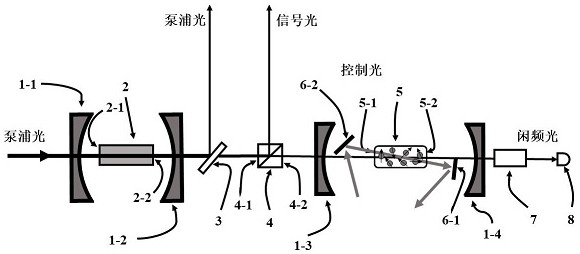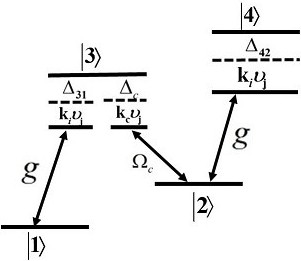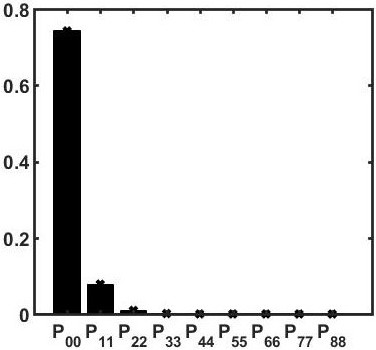System and method for efficiently forecasting single photons
A single-photon, high-efficiency technology, applied in the field of optical quantum information, can solve problems such as forecasting single-photon technology false positives, simplifying system implementation difficulties, etc., and achieve the effect of improving forecasting efficiency
- Summary
- Abstract
- Description
- Claims
- Application Information
AI Technical Summary
Problems solved by technology
Method used
Image
Examples
example 1
[0034] Example 1: Using rubidium atomic bubbles to block idler photons to realize high-efficiency single-photon source prediction
[0035] Combined with the system diagram, the specific implementation of this example is as follows:
[0036] (1) Two sets of high-quality optical microcavities are built by four plano-concave mirrors. The planes of the mirrors 1-1 and 1-2 are coated with an anti-reflection coating for the light with a wavelength of 397.5nm, and the concave surface is also coated with an anti-reflection coating for the light with a wavelength of 397.5nm, so that the pump laser light can pass through without loss. Mirrors 1-3 are coated with a 795nm anti-reflection coating to allow idler light to pass through. The concave surfaces of the four mirrors are all coated with high-reflection coatings for light with a wavelength of 795nm.
[0037] (2) For light with a wavelength of 795nm, the reflectivity of the concave surfaces of mirrors 1-1 and 1-3 reaches 99.9%, and ...
example 2
[0051] Example 2: Cavity-enhanced high-efficiency predictive single-photon source using cesium atom bubbles
[0052] If the cesium atom D1 line is used to block the idler light, then the corresponding pump laser wavelength needs to be selected as 447.3nm, and the anti-reflection coating plated for the pump laser should also be selected at 447.3nm. The generated signal light and idler light are 894.6nm, and the film coated for signal light and idler light should also be selected at 894.6nm. The transition energy level of the cesium atom involved is , , , . The idler at 894.6nm couples two transitions 1 to 3 and 2 to 4, and the left-handed circular polarization at 894.6nm couples transitions 2 to 3.
example 3
[0053] Example 3: Using silicon color center defects in diamond to realize high-efficiency forecast single-photon source
[0054] In this implementation, the solid-state diamond film needs to be cooled to a low temperature of 4K, and a negatively charged silicon color center defect acts as an N-type energy level system. Similar to Example 2, the wavelength of the pump laser needs to be adjusted to 369nm, the wavelength of the signal light and idler light generated by the PPKTP crystal is 738nm, and the working wavelength of the corresponding antireflection coating and reflective coating should also be adjusted to 369nm and 738nm. The silicon color center defects involved correspond to the transition energy levels of , , . The horizontally polarized idler light at 738nm couples two transitions 1 to 3 and 2 to 4, and the right-handed circular polarization control light at 738nm couples transitions 2 to 3.
PUM
 Login to View More
Login to View More Abstract
Description
Claims
Application Information
 Login to View More
Login to View More - R&D
- Intellectual Property
- Life Sciences
- Materials
- Tech Scout
- Unparalleled Data Quality
- Higher Quality Content
- 60% Fewer Hallucinations
Browse by: Latest US Patents, China's latest patents, Technical Efficacy Thesaurus, Application Domain, Technology Topic, Popular Technical Reports.
© 2025 PatSnap. All rights reserved.Legal|Privacy policy|Modern Slavery Act Transparency Statement|Sitemap|About US| Contact US: help@patsnap.com



